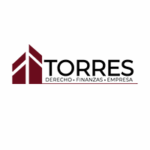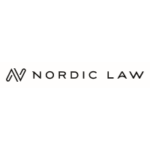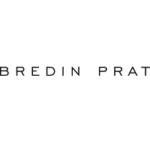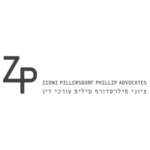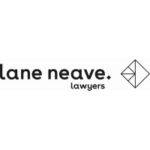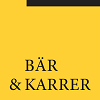-
Please provide a high-level overview of the blockchain market in your jurisdiction. In what business or public sectors are you seeing blockchain or other distributed ledger technologies being adopted?
The Netherlands has established itself as a progressive blockchain hub in Europe. The Dutch financial regulator (Authority for Financial Markets, ‘Autoriteit Financiële Markten‘, ‘AFM’) was the first to accept license applications under MiCAR (‘Markets in Crypto-Assets regulation’) starting in April 2024, demonstrating the country’s proactive approach to crypto-asset regulation. However, it’s worth noting that the Dutch Blockchain Coalition, which was a major public-private initiative to explore innovative applications of blockchain technology, concluded its program at the end of December 2024. This was due in part to the withdrawal of government funding. The ecosystem is now primarily driven by the Blockchain Netherlands Foundation (‘BCNL’) and private sector initiatives, such as 2Tokens.
The Blockchain Netherlands Foundation is an organization that is run by professionals that volunteer out of passion for decentralized technologies and community. By connecting with other networks, it aims to share knowledge, gain insights, and create opportunities within the blockchain industry. Major blockchain-related companies have entered into a partnership with BCNL.
2Tokens is a non-profit foundation that formulates a guide, as part of a larger vision, for any type of organization which wants to leverage blockchain and tokenization. It is the aim to come to a shared understanding on the token economy and, as such, it is a public interest initiative supported by a diverse community of technology companies, policy makers, financial advisors, banks, legal and regulatory experts and academia.Through the development of blockchain and token use-case, the creation of webinars & podcasts, and the documentation of our activities, 2Tokens increases the blockchain and token knowledge base of both its participants and interested people and organizations. 2Tokens consists of several working groups and focuses on, among other things, Electronic Bill of Lading (‘EBL’), Energy Communities (‘EU Sandbox’), Carbon & ESG, Digital Notary, and Invoice Markets.
Several key sectors are seeing blockchain integration in the Netherlands, including financial services, supply chain management, healthcare and energy, with applications aimed at creating more efficient, transparent and secure processes.
Financial services remains the most mature sector, with Amsterdam hosting numerous blockchain companies focused on crypto trading, stablecoins, and decentralized finance platforms. The regulatory clarity provided by MiCAR is expected to accelerate adoption. In addition, ING – one of the ‘big three’ Dutch banks – is one of nine European banks involved in the creation of a Euro-stablecoin, to be launched in 2026.
Another sector that has seen some prominent ventures into the adoption of blockchain-based solutions is supply chain & logistics: Given the Netherlands’ position as a major European logistics hub (with Rotterdam’s port), blockchain applications for supply chain transparency and tracking are being explored, though the global logistics company DHL notes that widespread adoption across supply chains will likely take more than five years to materialize at scale.
Blockchain is also being applied to healthcare data management, improving security and patient data control. An example is the Dutch award-winning application ‘Mijn Zorg Log’, which gives a patient more control over its own patient data and ensures trust when exchanging patient data.
The energy sector is exploring blockchain for optimizing energy distribution and grid management. For example, blockchain-powered P2P-energy trading projects are being piloted in local smart grid projects, such as those by the Municipality of The Hague and Stedin in Living Lab Scheveningen. These initiatives are being driven by the increasing problems of congestion in the electricity grid, with momentum around blockchain-based P2P energy trading projects starting to grow.
As for the public sector, the Dutch government has been actively exploring blockchain through pilot projects, though these initiatives appear to have been more exploratory in earlier years.
Amsterdam serves as the epicenter of blockchain activity, with Dutch Blockchain Week and Bitcoin Amsterdam being major annual events. The Netherlands hosts over 70 blockchain companies, many focused on Web3 applications, event management, and real-world asset tokenization. The ecosystem benefits from strong technical talent and a business-friendly regulatory environment.
-
Please outline the principal legislation and the regulators most relevant to the use of blockchain technologies in your jurisdiction. In particular, is there any blockchain-specific legislation or are there any blockchain-specific regulatory frameworks in your jurisdiction, either now or envisaged in the short or mid-term?
The regulatory framework for blockchain technologies in the Netherlands is primarily formed by legislation at the EU-level. The most significant recent developments include the adoption of Regulation 2023/1114 on Markets in Crypto Assets (‘MiCAR’), the revised Regulation 2023/1113 on Information Accompanying Transfers of Funds and Certain Crypto-Assets (‘TFR’), Regulation 2022/2554 on digital operational resilience for the financial sector and amending Regulations (‘DORA’), and Regulation 2022/858 on Distributed Ledger Technology Market Infrastructures, which established pilot regime for market infrastructures based on distributed ledger technology. MiCAR and TFR establish a harmonized legal framework for crypto-assets across the EU, enhancing transparency and security in crypto transactions, while the pilot regime facilitates the development of distributed ledger technologies and crypto-assets that qualify as financial instruments. The Netherlands has been at the forefront of MiCAR implementation, with the Authority for the Financial Markets opening its digital portal for Crypto-Asset Service Providers (‘CASP’) license applications on 22 April 2024, making it one of the first EU member states to do so.
The Dutch implementation of the Anti-Money Laundering Directives – currently in its fifth inclination – is via the Anti-Money Laundering and Counter-Terrorist Financing Act (‘Wet ter voorkoming van witwassen en financieren van terrorisme’, ‘Wwft’). The Wwft has played a crucial role in this field since May 2020, requiring all crypto service providers conducting business in or to the Netherlands to register with the Dutch central bank (‘De Nederlandsche Bank’, ‘DNB’). Under MiCAR, this registration requirement has been succeeded by a license requirement, which in turn is administered by the AFM. The transition from the previous regime under (solely) the 5th Anti-Money Laundering Directive to the MiCAR framework represents a significant evolution in the regulatory landscape. While MiCAR became fully applicable for most provisions on 30 December 2024, and rules concerning Asset-Referenced Tokens (‘ARTs’) and E-Money Tokens (‘EMTs’) became effective on 30 June 2024, the Netherlands has adopted a transitional provision that shortens the standard 18-month grandfathering period to approximately six months. Under this Dutch implementation, Virtual Asset Service Providers (‘VASPs’) registered with DNB before 30 December 2024 may continue to operate until 1 July 2025, provided they submit a CASP authorization application to the AFM. This shortened transitional regime ensures that only compliant and active market participants receive temporary relief while adapting to the new regulatory requirements, thereby preserving market integrity during the transition period.
The principal regulators overseeing blockchain technologies in the Netherlands are therefore the AFM, responsible for licensing and supervising crypto-asset service providers under MiCAR, and DNB, which continues to oversee anti-money laundering and counter-terrorist financing compliance under the Wwft. The AFM handles CASP license applications and notifications, while DNB maintains its register of crypto service providers for anti-money laundering purposes. This dual supervisory structure ensures comprehensive oversight covering both prudential and conduct requirements as well as financial crime prevention. The Dutch Data Protection Authority (‘Autoriteit Persoonsgegevens’, ‘AP’) also plays an important role in supervising compliance with the General Data Protection Regulation, particularly relevant for blockchain applications processing personal data.
Beyond crypto-asset specific regulation, blockchain applications in other sectors remain subject to existing sector-specific legislation, including consumer laws, financial services regulations, healthcare data protection requirements, and energy market rules. There is currently no standalone blockchain-specific legislation in the Netherlands beyond the MiCAR framework for crypto-assets. The regulatory approach focuses on principles-based supervision through existing legal frameworks supplemented by EU regulations, rather than creating comprehensive national blockchain-specific laws. In the short to mid-term, further regulatory development is expected primarily through MiCAR Level 2 and Level 3 implementing standards throughout 2025, along with sector-specific guidance from the AFM and DNB on how existing regulations apply to particular blockchain use cases.
-
What is the current attitude of the government and of regulators to the use of blockchain technology in your jurisdiction?
The Dutch government and regulators maintain a pragmatic and generally positive attitude towards blockchain technology, viewing it as an innovation that can enhance efficiency, transparency, and security across various sectors. This supportive stance is evidenced by the Netherlands being among the first EU member states to accept MiCAR license applications through the AFM’s digital portal.The Dutch authorities have demonstrated their willingness to facilitate the development of blockchain applications while ensuring appropriate regulatory oversight, particularly in areas such as financial services, supply chain management, and energy. Notable initiatives include blockchain-based peer-to-peer energy trading projects in collaboration with municipalities and grid operators, as well as the Port of Rotterdam’s Distro Energy pilot project combining blockchain and AI for decentralized renewable energy markets.
The regulatory approach in the Netherlands is characterized by adherence to EU-level frameworks rather than the creation of separate national blockchain-specific legislation. The implementation of MiCAR represents the most significant regulatory development, with the AFM serving as the competent authority for crypto-asset service provider licensing and DNB maintaining its role in anti-money laundering and counter-terrorist financing supervision under the Wwft. This division of responsibilities reflects a comprehensive regulatory structure where blockchain applications are governed through existing sector-specific regulations supplemented by horizontal frameworks such as the Regulation (EU) 2016/679 of the European Parliament and of the Council of 27 April 2016 on the protection of natural persons with regard to the processing of personal data and on the free movement of such data, and repealing Directive 95/46/EC (General Data Protection Regulation, ‘GDPR’) for data protection. The Netherlands has opted for a principles-based approach that provides regulatory clarity while maintaining flexibility for innovation.
While the Dutch ecosystem benefits from a well-established regulatory framework and strong technical talent, authorities remain conscious of the challenges associated with blockchain adoption. The tension between blockchain’s immutable nature and GDPR’s requirements for data rectification, the right to be forgotten, privacy by design, and data erasure remains a significant consideration, with the Dutch Data Protection Authority emphasizing that storing personal data on blockchain should generally be avoided where it conflicts with data protection principles. Furthermore, practical implementation challenges persist, particularly regarding the timeline for widespread adoption in sectors such as supply chain and logistics, where industry observers suggest that full-scale integration may require more than five years to materialize.
The Dutch blockchain ecosystem has evolved significantly over recent years, with Amsterdam serving as the primary hub hosting over seventy blockchain companies and annual events such as Dutch Blockchain Week. However, it is noteworthy that the Dutch Blockchain Coalition, which was a major public-private initiative under the Top Team ICT, concluded its program at the end of December 2024. The ecosystem is now primarily driven by the Blockchain Netherlands Foundation and private sector initiatives, suggesting a shift towards market-led development rather than government-coordinated programs. This transition indicates a maturation of the sector where commercial viability and regulatory compliance have become the primary drivers of blockchain adoption.
Overall, the Netherlands demonstrates a balanced and forward-looking approach to blockchain technology, recognizing its potential while acknowledging that the technology continues to evolve and that certain applications remain in experimental phases. The regulatory environment prioritizes consumer protection, market integrity, and financial stability through the implementation of MiCAR and existing legal frameworks, while simultaneously positioning the Netherlands as an attractive jurisdiction for blockchain innovation within the European Union. This pragmatic stance reflects the Dutch tradition of fostering innovation while maintaining robust regulatory standards, creating an environment where blockchain technologies can develop within clear legal boundaries.
-
Is there a central bank digital currency (‘CBDC’) project in your jurisdiction? If so, what is the status of the project?
The Netherlands, as part of the Eurosystem, has no national CBDC project. Instead, DNB is a key participant in the unified effort to develop a potential digital euro, ensuring consistency across the eurozone. The project is in a two-year preparation phase that began in November 2023. During this time, the Eurosystem is finalising design and technical requirements, including a rulebook, while also selecting platform providers and consulting with stakeholders. While the European Central Bank (‘ECB’) leads the project, DNB plays a significant role. It has conducted its own research on the digital euro’s implications for the Dutch financial system, focusing on balancing public and private money and exploring design options related to technology, privacy, and circulation. The potential issuance of a digital euro hinges on a final decision by the ECB’s Governing Council. This decision is anticipated to be made in the coming years. In parallel, the European Commission has submitted a legislative proposal to create a legal framework, which is currently under negotiation, paving the way for the digital euro to become legal tender.
-
What is the current approach in your jurisdiction to the treatment of cryptoassets and decentralised finance (‘DeFi’) for the purposes of financial regulation?
The legal approach in the Netherlands with regards to crypto-assets and decentralised finance (‘DeFi’) is primarily determined by two key pillars: the existing national financial regulatory framework and the phased implementation of MiCARR. Before MiCARR came into full effect, the Dutch regulatory landscape was characterised by a case-by-case assessment under the Dutch Financial Supervision Act (“Wet Financieel Toezicht‘, ‘WFT’) and a registration requirement for certain VASPs under anti-money laundering legislation. If a crypto-asset was deemed to fall within the definition of a traditional financial instrument, such as a security or electronic money, it was subject to the full suite of existing financial regulations, overseen by either the AFM or DNB.
As a result, the current Dutch approach to DeFi is nuanced and depends on the level of decentralisation. MiCAR does not provide a formal, technical definition of ‘DeFi’ or ‘decentralised’, but it does outline in its recitals and provisions how the concept is interpreted for the purposes of the regulation. If a DeFi protocol has an identifiable central operator, such as a company or a foundation, that entity would likely be considered a CASP and would therefore fall under the scope of MiCAR. This entity would be required to obtain a licence and comply with all applicable MiCAR obligations. However, for truly decentralised DeFi protocols with no identifiable central operator or governing body, the regulatory landscape remains largely unaddressed, both under current Dutch law and under MiCAR.
A popular belief among developers of DeFi protocols is that a Decentralized Autonomous Organisation (‘DAO’)-governed protocol is purely decentralised. However, this is an oversimplification. Under Dutch law, a DAO could possibly qualify as an informal association (association with limited legal capacity). Although the ‘real’ identities behind the participants in that association may not be known, the DeFi protocol is at that moment controlled by an identifiable intermediary: the DAO.
What possibly is purely decentralised is a protocol that consists of an irreversible smart contract that cannot be changed and whose operation cannot be influenced after deployment. At that point, there is no longer any intermediary offering, managing or controlling the protocol. An exception to this is when a party, for example, receives fees from the protocol. In that case, there is an identifiable intermediary.
In short, DeFi is still an unexplored grey area with many uncertainties. It is expected that clarity will be provided by new EU DeFi legislation.
These protocols, often governed by smart contracts and DAOs, currently operate in a grey area.
-
What is the current approach in your jurisdiction to the treatment of cryptoassets and DeFi for the purposes of anti-money laundering and sanctions?
The legal approach in the Netherlands to anti-money laundering and sanctions for crypto-assets is well-established, rooted in both national and European legislation. The core of the framework is the Wwft, which implemented Directive (EU) 2018/843 of the European Parliament and of the Council of 30 May 2018 amending Directive (EU) 2015/849 on the prevention of the use of the financial system for the purposes of money laundering or terrorist financing, and amending Directives 2009/138/EC and 2013/36/EU (5h Anti-Money Laundering Directive, ‘AMLD5’). This legislation requires all CASPs operating in the Netherlands to adhere to strict anti-money laundering and counter-terrorist financing obligations. The Dutch approach reflects a commitment to preventing the use of crypto-assets for illicit purposes while maintaining a clear and stable regulatory environment.
Under the Wwft and the Sanctions Act (‘Sanctiewet 1977’), registered CASPs must implement a comprehensive suite of compliance measures. These include performing robust customer due diligence (‘CDD’) and know-your-customer (‘KYC’) procedures, which involve verifying customer identities and screening them against sanctions lists and for politically exposed person (‘PEP’) status. Furthermore, they are required to continuously monitor transactions for suspicious activity and report any such findings to the Financial Intelligence Unit (‘FIU’) of the Netherlands. DNB and the AFM provide detailed guidance to help firms comply with these obligations.
The implementation of the TFR further reinforces this framework, particularly for the movement of crypto-assets. The TFR imposes what is commonly known as the ‘Travel Rule,’ obligating CASPs to collect and transmit specific information about the originator and beneficiary of crypto-asset transfers. This applies to transactions exceeding a certain threshold and is a crucial measure for enhancing transparency and traceability, ensuring that crypto-asset transfers are subject to the same level of scrutiny as traditional wire transfers.
The regulatory treatment of DeFi is more complex. While MiCAR provides a clearer framework for CASPs with an identifiable intermediary, truly decentralised DeFi protocols with no central entity or governance body remain largely in a regulatory grey area. Since the Anti-Money Laundering and Countering the Financing of Terrorism (‘AML/CFT’) obligations under the Wwft and MiCAR are largely entity-based, it is difficult to apply these rules to protocols that have no central counterparty to hold accountable. The current position is that unless a central intermediary can be identified, these protocols fall outside the scope of MiCAR.
-
What is the current approach in your jurisdiction to the treatment of cryptoassets and DeFi for the purposes of taxation?
In the Netherlands, the taxation of crypto-assets is primarily handled under the existing income tax system, which is divided into three boxes (pertaining respectively to income from labour, income from substantial business interests, and income from interest on savings and investments). For most private individuals, crypto-assets are considered property and are taxed under box 3, which is for savings and investments. The tax is not (yet) on capital gains, but rather on a presumed yield from the value of all your assets, including crypto, on January 1st of the tax year. This means that a tax liability can arise simply from holding crypto, regardless of whether you sell it or make a profit.
The Dutch Tax and Customs Administration (‘Belastingdienst’) assesses a deemed return on the net value of a taxpayer’s assets in Box 3, which includes crypto, minus any qualifying debts. The rate of this presumed yield depends on the value of the assets. For the 2025 tax year, for example, a different presumed return rate is applied to savings versus investments and other assets, with crypto falling into the latter category. Tax is then paid at a flat rate on this calculated return. This approach can lead to situations where a taxpayer owes more in tax than the actual profit they made, or even if they experienced a loss, although recent Supreme Court rulings and proposed new legislation aim to address this disparity by 2028. Among the larger investors, this causes a shift from crypto assets in box 3 (private) to crypto assets on the balance sheet of an investment company, which can easily be set up in the Netherlands. Taxation is based solely on the realized return upon the sale of the crypto assets, thereby avoiding taxation on fictional returns and allowing for capital compounding (or deferral of liability). Losses incurred may be deducted from the trading income.
The taxation of activities related to crypto and decentralised finance (DeFi) is more complex and depends on whether the activity is considered an investment or a business. If a taxpayer’s activities, such as mining, staking, or professional trading, are deemed to go beyond ‘normal asset management,’ the income from these activities is taxed as income from work or business in Box 1. This includes rewards from mining or staking, which are taxed at progressive rates. The line between Box 1 and Box 3 activities is not always clear and is assessed on a case-by-case basis, considering factors like the amount of time and effort spent on the activity and the use of special knowledge.
The tax treatment of DeFi specifically is currently a grey area, but the underlying principles apply. For passive participation, such as lending or providing liquidity, the assets are generally treated as Box 3 assets, with any interest or rewards received being considered part of the presumed return. However, if the activity is deemed to be a business, it would fall under Box 1. With the increasing use of on-chain data and the upcoming Council Directive (EU) 2023/2226 of 17 October 2023 amending ‘Directive 2011/16/EU on administrative cooperation in the field of taxation’ (‘DAC8’), which will mandate the automatic exchange of information on crypto-asset transactions between EU member states from 2026, the Belastingdienst’s ability to monitor and enforce tax compliance for both crypto-assets and DeFi activities will significantly increase.
-
Are there any prohibitions on the use or trading of cryptoassets in your jurisdiction? If permitted, is cryptoasset trading common?
There are no general prohibitions on the use or trading of crypto-assets in the Netherlands. Individuals are free to purchase, trade, and hold crypto-assets on their own behalf without requiring any specific licence or registration. The Dutch government and regulators have taken a stance of regulation rather than outright prohibition, focusing on safeguarding the integrity of the financial system, protecting consumers and addressing risks such as money laundering and terrorist financing (Wwft) and imprudential asset management or corporate governance (MiCAR). This is in line with the broader EU approach to digital assets.
When crypto-assets are used as underlying assets for financial instruments, such as futures or leveraged Contracts for Difference (‘CFDs’), these products are subject to supervision by the AFM, because these products qualify as financial instruments. Companies offering these products to Dutch (retail) investors must comply with the rules of the WFT. The AFM has taken strict action in the past and reminded firms of their general duty of care. This means that providers must consider whether offering these complex and risky products to private investors is in the best interests of the customer. Due to these strict rules and the duty of care of providers, many large international crypto exchanges have chosen to discontinue their futures services for Dutch users.
Given that crypto-asset use and trading are not prohibited, trading is relatively common in the Netherlands. The country has a high level of interest in crypto-assets, with a significant number of exchanges and platforms operating locally, many of which are now obtaining their MiCAR licences. There is a young and tech-savvy population, and the Netherlands is home to several prominent crypto companies and exchanges. The entry of compliant firms under the new MiCAR framework is expected to further facilitate and increase mainstream adoption.
From a tax perspective, crypto-assets are generally treated as property in the Netherlands. Gains from trading are not (yet) subject to a specific capital gains tax unless the activity is considered a professional business. As described above, the value of crypto-asset holdings on the reference date is included in the individual’s assets for the purposes of income tax. While this tax treatment can influence trading behaviour, it has not proven to be a significant deterrent for many private investors. Overall, the combination of regulatory clarity and a high degree of public interest suggests that crypto-asset trading is and will continue to be a common activity in the Netherlands.
-
To what extent have initial coin offerings (‘ICOs’) taken place in your jurisdiction and what has been the attitude of relevant authorities to ICOs? If permissible, what are the key requirements that an entity would need to comply with when launching an ICO?
There have been a few initial coin offerings (‘ICOs’) launched from the Netherlands, but these occurred mainly in the period between 2016 and 2019 and generally did not manage to sustain a long-term presence (or to maintain their initial value). Prior to the full implementation of the MiCAR, Dutch authorities approached ICOs with caution, on a case-by-case basis. The AFM and DNB consistently focused on investor protection, issuing multiple warnings about risks and a lack of safeguards. Possibly as a direct result of this cautious approach, only a limited number of prominent ICOs with a clear Dutch nexus were launched. Examples include LegalThings One token (‘LTO’) and Dusk token (‘DUSK’).
The legal landscape for ICOs has been fundamentally reformed by MiCAR, which came into full effect on 30 December 2024. This harmonised framework provides legal clarity for crypto-assets that do not qualify as financial instruments. An entity launching a token, for example via an ICO, must draw up a white paper and notify it to the AFM, and comply with strict marketing requirements. However, if a token qualifies as a financial instrument under the Directive 2014/65/EU of the European Parliament and of the Council of 15 May 2014 on markets in financial instruments and amending Directive 2002/92/EC and Directive 2011/61/EU (‘Markets in Financial Instruments Directive’,‘MiFID II’), the more onerous Regulation (EU) 2017/1129 of the European Parliament and of the Council of 14 June 2017 on the prospectus to be published when securities are offered to the public or admitted to trading on a regulated market, and repealing Directive 2003/71/EC (‘Prospectus Regulation’) applies. Therefore, a careful legal assessment of the token’s characteristics remains the most critical first step.
-
Are there any legal or regulatory issues concerning the transfer of title to or the granting of security over cryptoassets?
Yes, there are significant legal and regulatory issues concerning the transfer of title and the granting of security over crypto-assets in the Netherlands, primarily due to their unique nature and the traditional focus of Dutch property law on tangible objects and established patrimonial rights. The Dutch Civil Code (‘Burgerlijk Wetboek’) does not explicitly define crypto-assets, leading to ongoing debates about their legal classification. While courts have sometimes recognised crypto-assets as ‘patrimonial rights’ (‘vermogensrechten’) in specific cases, this does not provide a comprehensive, statutory basis for their legal treatment as property. This legal ambiguity poses challenges for establishing a clear and secure legal framework for their transfer or use as collateral.
The primary legal challenge lies in how to grant a valid security right over a crypto-asset. Under Dutch civil law, a security interest (e.g., a pledge) requires either a physical transfer of possession or a deed of pledge and notification. Neither of these methods fits neatly with the nature of crypto-assets, which are intangible and exist on a decentralised ledger. While it is generally accepted that a pledge can be created by a transfer of control over the private keys, this is not a statutory or well-established method.
This challenge was addressed in the landmark Cryptobatz case (District Court of Noord-Nederland (Leeuwarden), Provisional Measures Judge, February 4, 2022, Case No. C/17/182478 KG RK 22/24), which involved the first grant of a civil pre-judgment attachment (‘conservatoir beslag tot afgifte‘) over a Non-Fungible Token (‘NFT’) in the Netherlands. By granting the attachment, the court implicitly confirmed that the NFT qualified as an asset subject to judicial seizure, aligning with the view that it constitutes a patrimonial right. Crucially, the court’s order facilitated the practical execution of the seizure by compelling the defendant to surrender the private keys and access codes to a bailiff for transfer to a court-designated custodial wallet. This demonstrated that judicial enforcement mechanisms can reach crypto-assets, but it simultaneously underscored that the success of such measures currently relies on the enforceable transfer of the private keys, thereby highlighting the reliance on contractual or procedural cooperation in the absence of clear proprietary law.
For crypto-assets held in a custodial wallet, the situation is even more complex, as the client’s rights are typically contractual, not proprietary. The custodian is the legal holder of the crypto-asset, and the client has a claim against the custodian, not a direct ownership right in the asset itself. This can pose significant risks in the event of the custodian’s insolvency.
In addition to property law issues, the implementation of the MiCAR has created a new set of regulatory requirements that are relevant to asset transfers and security interests. MiCAR requires CASPs to segregate customer crypto-assets from their own assets, a crucial measure to protect clients in case of a service provider’s insolvency. This obligation, while not a solution to the underlying property law issues, is a vital regulatory safeguard. This contrasts with the situation for truly decentralised platforms, where no single entity is responsible for segregating assets, leaving users to rely on the underlying protocol.
In conclusion, while there are no explicit legal prohibitions on transferring title or granting security over crypto-assets in the Netherlands, the legal framework remains a work in progress. The absence of a clear statutory classification for crypto-assets and the challenges of applying traditional property law concepts create legal uncertainty. The most prudent approach for parties seeking to grant or receive a security interest is to rely on contractual arrangements and to ensure that the method of control transfer, such as the transfer of private keys, is as robust as possible.
-
How are smart contracts characterised within your legal framework? Are there any enforceability issues specific to the operation of smart contracts which do not arise in the case of traditional legal contracts?
Within the Dutch legal framework, there is no specific statutory definition for a smart contract. Instead, a smart contract is primarily viewed as a piece of computer code designed to automate the execution, control, or documentation of legally relevant events and actions. Its legal characterisation is not an a priori matter of law but depends on its specific function and design. For example, a smart contract can function as a legally binding contract, a part of a larger legal contract, or simply as a technical tool to facilitate a transaction. The core principle of Dutch contract law—that a contract is formed by an offer and its acceptance—can be applied to smart contracts, provided the parties’ intentions can be discerned from their actions. This approach allows existing legal principles to be applied to new technology without the need for new legislation.
Enforceability issues with smart contracts often stem from the translation of legal concepts into immutable code. While traditional contracts allow for human interpretation, negotiation, and judicial discretion, smart contracts are de facto deterministic: ‘code is law’. As such, one could argue that a smart contract has the same effect as a so-called ‘Entire Agreement Clause’, unless referring to an off-chain contract as is the case with some NFTs.
The effect of such an ‘Entire Agreement Clause’ in Dutch contract law has initially been established in case law (Lundiform/Mexx (Dutch Supreme Court 5 April 2013, ECLI:NL:HR:2013:BY8101)) and differs significantly from its Anglo-Saxon origins. The main rule is that the clause does not automatically lead to an exclusively linguistic interpretation of the agreement, but must always be considered in the light of the Haviltex landmark case. In that case, the Supreme Court establishes that the question of how the relationship between the parties is regulated in a written contract and whether this contract leaves a gap that needs to be filled cannot be answered on the basis of a purely linguistic interpretation of the provisions of that contract alone. Crucially, the Dutch Supreme Court ruling of August 25, 2023, ECLI:NL:HR:2023:1131, has since confirmed that the parties are free to contractually deviate from the Haviltex rule and agree on their own standard of interpretation.
To that regard, a smart contract, when combined with an explicit stipulation for a literal reading, is a more robust tool for limiting judicial reliance on extrinsic circumstances. Its primary function in the Netherlands would likely to be to delineate the scope of the agreement—establishing that only the smart contract contains the binding terms, thereby replacing any prior inconsistent agreements. While the contract’s presence suggests a meticulous approach to drafting, and can lead a court to assign great weight to the smart contract (especially in contracts between professional parties), the ultimate standard for interpretation remains the parties’ reasonable expectations, as determined by all the facts of the case.
Also smart contracts can create significant challenges. For instance, what happens if the code contains a bug or a mistake that leads to an unintended outcome? In a traditional contract, a court can correct such an error based on the principle of reasonableness and fairness. With a smart contract, reversing a transaction on a blockchain is technically difficult or impossible, requiring an external legal order to enforce a “reverse transaction” in the real world.
Furthermore, issues can arise regarding the termination of a smart contract. Under Dutch law, a contract can be terminated, rescinded or voided due to unforeseen circumstances or non-performance. A smart contract, by its nature, may continue to operate on a blockchain indefinitely unless a specific kill switch or termination function is coded into it. This raises questions about a party’s right to terminate, rescind and undo, or void an agreement and the ability to reclaim assets. The absence of a central, identifiable party in some decentralised smart contracts also presents a challenge, making it difficult to determine who can be held liable in case of a dispute.
-
How are Decentralised Autonomous Organisations (‘DAOs’) treated in your jurisdiction?
De facto, a DAO does not have a specific legal status under Dutch law. Since there is no dedicated legal framework for DAOs, their treatment is subject to a case-by-case assessment based on existing legal principles, most notably corporate law. This creates a significant degree of legal uncertainty. While a DAO itself is not a recognised legal entity, Dutch law could potentially classify it as a partnership or an unincorporated association, which would have serious consequences for the liability of its members.
The most critical issue for a DAO operating in or from the Netherlands is the question of liability. If a DAO is deemed to be a partnership (e.g., a “v.o.f.” or “maatschap“) or an unincorporated association (“informele vereniging”), its members could be held jointly and severally liable for all of the DAO’s obligations. This would expose the personal assets of participants to claims from third parties, a risk that is often contrary to the decentralised and pseudonymous nature of DAOs. This legal ambiguity highlights the significant risks for individuals contributing to or participating in such organisations.
This legal uncertainty also affects a DAO’s ability to engage with the traditional legal system. Without legal personality, a DAO cannot, for example, own property in its own name, enter into contracts, or sue or be sued in court. This complicates its operations, particularly in cases where it needs to interact with off-chain assets or services. The legal status of DAOs remains a key challenge for Dutch and European regulators. While MiCAR provides a framework for certain crypto-assets, it does not explicitly address the legal status of DAOs themselves, leaving their legal and regulatory treatment a subject of ongoing debate.
-
Have there been any governmental or regulatory enforcement actions concerning blockchain in your jurisdiction?
Yes, there have been several significant governmental and regulatory enforcement actions concerning blockchain and crypto-assets in the Netherlands. The approach is not to target the underlying blockchain technology itself, but rather the entities and services built upon it. The primary focus of enforcement has been on compliance with anti-money laundering and counter-terrorist financing regulations.
DNB, the central bank, has been the most active regulator in this area. A key point of contention has been the mandatory registration requirement for CASPs under the Wwft, which has been in place since 2020. DNB has imposed substantial administrative fines on large, internationally-operating exchanges like Coinbase, Binance, and Bybit for offering services in the Netherlands without the required registration. These enforcement actions underscore the strict view of Dutch regulators that all crypto exchanges and custodians must comply with national anti-money laundering and counter-terrorist financing laws, regardless of their global size or operational base.
Beyond fines, there have also been notable legal and criminal actions. The Fiscal Information and Investigation Service (‘Fiscale Inlichtingen en Opsporings Dienst’, ‘FIOD’) has taken direct action against crypto exchanges and individuals suspected of facilitating money laundering, including taking services offline and seizing crypto-assets. There have also been court cases, such as the one initiated by the Dutch exchange Bitonic, which challenged DNB’s strict customer verification requirements. While the court did not suspend the requirement, it did express doubt about DNB’s legal basis, highlighting a tension between regulatory authority and industry practices. These cases illustrate that the regulatory landscape is a dynamic one, with enforcement actions and court rulings shaping the interpretation of the law.
-
Are there any other generally-applicable laws, case law or regulations that may present issues for the use of blockchain technology (such as privacy and data protection law or insolvency law)?
Beyond MiCAR and other financial regulations, the use of blockchain technology in the Netherlands is also subject to generally applicable laws, including the GDPR, insolvency law and DORA.
The immutable nature of public blockchains presents a direct challenge to a core principle of the GDPR: the right to erasure, or the “right to be forgotten”. Since data on a public blockchain cannot be deleted, it can conflict with a data subject’s right to have their personal data removed. This has led to a widely accepted legal position that personal data should not be stored directly on-chain. Instead, projects are advised to store only an unidentifiable hash or cryptographic commitment on the blockchain, with the actual personal data stored in an off-chain, mutable database. This technique is already being used for off-chain NFTs.
Another area of legal complexity is presented by insolvency law. The legal status of crypto-assets in a bankruptcy scenario remains a matter of ongoing debate and legal development, particularly concerning the distinction between a personal claim (a claim against the insolvent entity) and a proprietary claim (a claim to the crypto-assets themselves). The key question is whether customers’ crypto-assets held by a third-party custodian or exchange can be segregated from the company’s own assets in the event of insolvency. A historic Dutch Supreme Court case, Mulder/Teixeira de Mattos (ECLI:NL:HR:1968:AC2286), established a precedent that an unsegregated pool of fungible goods becomes the property of the company, which could leave customers with only a personal claim. While case law on this specific issue is still developing, the principle highlights the critical importance of a custodian’s terms of service and how they handle client funds.
Furthermore, a combination of MiCAR and DORA could hinder innovative entities from building blockchain applications. When such an entity qualifies as a CASP under MiCAR, DORA also applies to that entity. Under DORA, CASPs must comply with requirements in the areas of ICT risk management, management and reporting of ICT-related incidents, testing of digital operational resilience, management of ICT risk from third-party providers, and information exchange. These are labour-intensive and costly requirements that innovative start-ups may not be able to meet.
Other legal considerations for blockchain projects include intellectual property law, consumer protection law, property law, contract law and anti-money laundering regulations (see above for a discussion of the latter three).
-
Are there any other key issues concerning blockchain technology in your jurisdiction that legal practitioners should be aware of?
Under Dutch law, contracts made in violation of the law are null and void. This principle has been central to several lower Dutch court rulings concerning consumer losses at unlicensed online casinos before and after the 2021 statutory ban on such casinos was lifted. These courts have ruled that the gambling contracts are invalid, requiring the casinos to refund the consumers’ losses. Legal practitioners widely believe this same principle applies to financial losses from crypto investments with unlicensed CASPs or VASPs. The uncertain legal status of contracts with unlicensed crypto service providers is therefore a key issue. A Dutch Supreme Court ruling on the classification of the casino contracts is expected in late 2025 and should provide much-needed clarity for both the gaming and crypto sectors.
In the litigation sphere, the Dutch courts have proven themselves to be remarkably forward thinking. Of particular note is the willingness of the courts to grant ex parte or summary injunctive orders against crypto-exchanges with regard to the freezing of (crypto-)assets acquired via fraud and the provision of KYC-data of the fraudsters involved. In this, the courts (and victims) have been encouraged by the revised Dutch law of evidence effective from 1 January 2025, which lowers the bar for obtaining documents, (personal) data or other material evidence in the pre-trial phase and in the proceedings. The other side of the coin, however, is that it has become relatively easy to compel crypto-exchanges and other crypto-service providers to hand over certain data.
The Netherlands: Blockchain & Crypto Assets
This country-specific Q&A provides an overview of Blockchain & Crypto Assets laws and regulations applicable in The Netherlands.
-
Please provide a high-level overview of the blockchain market in your jurisdiction. In what business or public sectors are you seeing blockchain or other distributed ledger technologies being adopted?
-
Please outline the principal legislation and the regulators most relevant to the use of blockchain technologies in your jurisdiction. In particular, is there any blockchain-specific legislation or are there any blockchain-specific regulatory frameworks in your jurisdiction, either now or envisaged in the short or mid-term?
-
What is the current attitude of the government and of regulators to the use of blockchain technology in your jurisdiction?
-
Is there a central bank digital currency (‘CBDC’) project in your jurisdiction? If so, what is the status of the project?
-
What is the current approach in your jurisdiction to the treatment of cryptoassets and decentralised finance (‘DeFi’) for the purposes of financial regulation?
-
What is the current approach in your jurisdiction to the treatment of cryptoassets and DeFi for the purposes of anti-money laundering and sanctions?
-
What is the current approach in your jurisdiction to the treatment of cryptoassets and DeFi for the purposes of taxation?
-
Are there any prohibitions on the use or trading of cryptoassets in your jurisdiction? If permitted, is cryptoasset trading common?
-
To what extent have initial coin offerings (‘ICOs’) taken place in your jurisdiction and what has been the attitude of relevant authorities to ICOs? If permissible, what are the key requirements that an entity would need to comply with when launching an ICO?
-
Are there any legal or regulatory issues concerning the transfer of title to or the granting of security over cryptoassets?
-
How are smart contracts characterised within your legal framework? Are there any enforceability issues specific to the operation of smart contracts which do not arise in the case of traditional legal contracts?
-
How are Decentralised Autonomous Organisations (‘DAOs’) treated in your jurisdiction?
-
Have there been any governmental or regulatory enforcement actions concerning blockchain in your jurisdiction?
-
Are there any other generally-applicable laws, case law or regulations that may present issues for the use of blockchain technology (such as privacy and data protection law or insolvency law)?
-
Are there any other key issues concerning blockchain technology in your jurisdiction that legal practitioners should be aware of?




